One of the hottest chili peppers in the world, the Ghost Pepper is insanely spicy and not for the faint of heart or stomach. Known also as Bhut Jolokia, Ghost Chili, Red Naga, this hybrid chili pepper originates from the Assam region in northeast India. “Bhut” means “ghost” and “Jolokia” means “chili pepper” in the Assamese language.
Appearance
A Ghost Pepper is on the smaller side, approximately 2 – 3 1/2 inches long and 1 inch wide with a tapered end. Ripe Ghost Peppers range in color from a bright orange to a deep red. The peppers have a fairly thin skin which is often wrinkly with deep groves, like a prune.
Taste and Heat
I’ve tasted some really hot peppers and the Ghost Pepper is by far the spiciest pepper I’ve eaten to date. The Ghost Pepper has a latent intensity which is initially deceiving. When you first eat it, the pepper tastes sweet. About 10-15 seconds later, you feel a raging burn. The burning sensation spreads and continues to intensify making your mouth feel like it’s on fire and then your eyes start watering. This is when you frantically reach for ice water, milk or anything to try to put out the 5-alarm fire. It’s amazing! 🙂
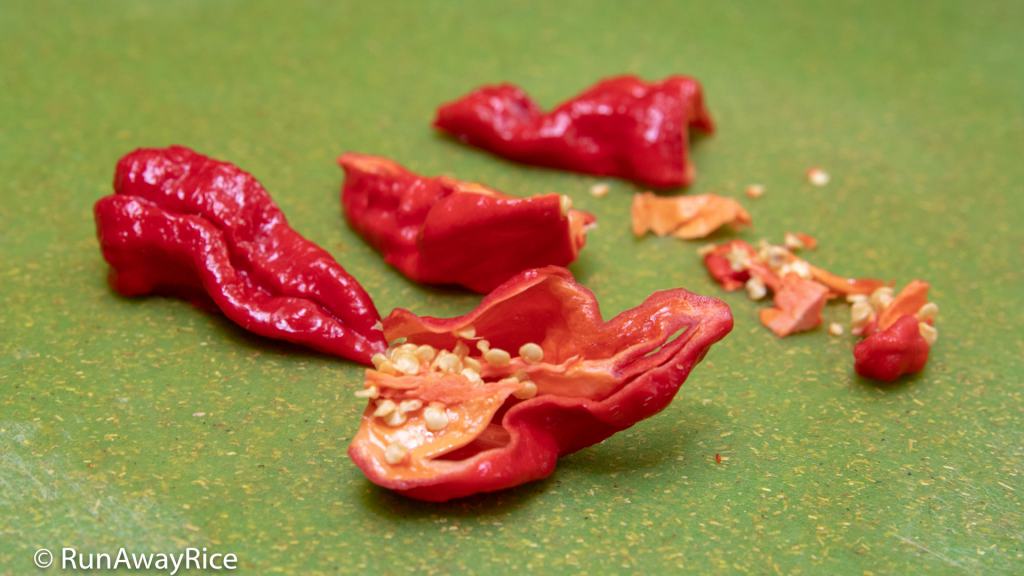
A Scoville heat unit (SHU) measures a pepper’s spiciness and a Ghost Pepper registers 850,000 – 1 million Scoville heat units. To help put things into perspective, here are a few popular chili peppers for comparison:
Ghost Pepper 850,000 – 1 million SHU
Habanero 100,000 – 350,000 SHU
Thai chili 50,000 – 100,000 SHU
Serrano 10,000 – 23,000 SHU
Jalapeno 2,500 – 8,000
Pepperoncini 100 – 500
Bell Pepper = 0 SHU
Why Do We Crave the Spice?
Spicy foods are something many people enjoy, crave and are addicted to, myself included. I love chomping on fresh chili peppers or dousing foods with fiery chili sauce. Interesting enough, did you know spiciness is not a taste? The basic tastes are: sweet, salt, bitter, sour and savory. Spiciness is not a taste but a sensation of pain. When you eat spicy foods, it’s the pain receptors in your mouth registering the fiery sensations. Sounds torturous right? In a way it is, and it’s this pain and burning sensation caused by the spicy foods which we enjoy and crave!
Growing
Similar to other pepper plants, the Ghost Pepper is a leafy flowering plant, growing 2-3 feet tall. The plants grow well in warmer climates and during the summer months. Below is a picture of my Ghost Pepper, planted late last year. It’s flourished during the hot California summer, producing many peppers. So far, I’ve harvested about 50 peppers from this single plant, more than I could ever eat! (Who wants some?)
The Ghost Pepper plant is really easy to grow. It is planted in a box garden where it gets full sun. I water it 3 – 4 times per week, usually in the evenings. I haven’t had to fertilize or treat the plant for bugs. It’s really been effortless. Even if you can’t eat the peppers, they are fun to grow, bright-colored and so pretty to look at.
Culinary Uses
If you can handle the spice, you can enjoy Ghost Peppers with your favorite foods. Chop it up and add to fish sauce dipping sauce, marinades, salsas and stir-fries. Make a wickedly good Chili Sauce / Hot Sauce (Tuong Ot). Pickled Ghost Peppers are awesome too. The pickling process actually removes some of the spiciness from peppers. Check out my Pickled Jalapenos (Ot Ngam Giam) recipe. Use this base recipe and substitute with Ghost Peppers or whichever spicy peppers you like.
Safe Handling
Use food prep gloves when chopping Ghost Peppers so you’re not touching the peppers directly as they will burn your skin. (Whole Ghost Peppers can be safely handled without gloves.) Also be really careful not to touch your face, especially your eyes and nose, when cutting the peppers.
Prepare the peppers in a well-ventilated area. The pepper fumes can cause watering eyes, sneezing, hiccups and coughing. After cutting the peppers, wash all utensils and cutting boards well with lots of soap and hot water to avoid leaving residual oils behind and contaminating other foods later.
If you enjoy this “Ghost Pepper / Bhut Jolokia – Dare to Eat It?” post, you may also like:
Kiwano Melon / Horned Melon – What is this Exotic Fruit?
Rice Flour vs. Glutinous Rice Flour – What are the Differences?
My Gardening Adventures – Summer 2018
Tools I Love and Use in My Kitchen

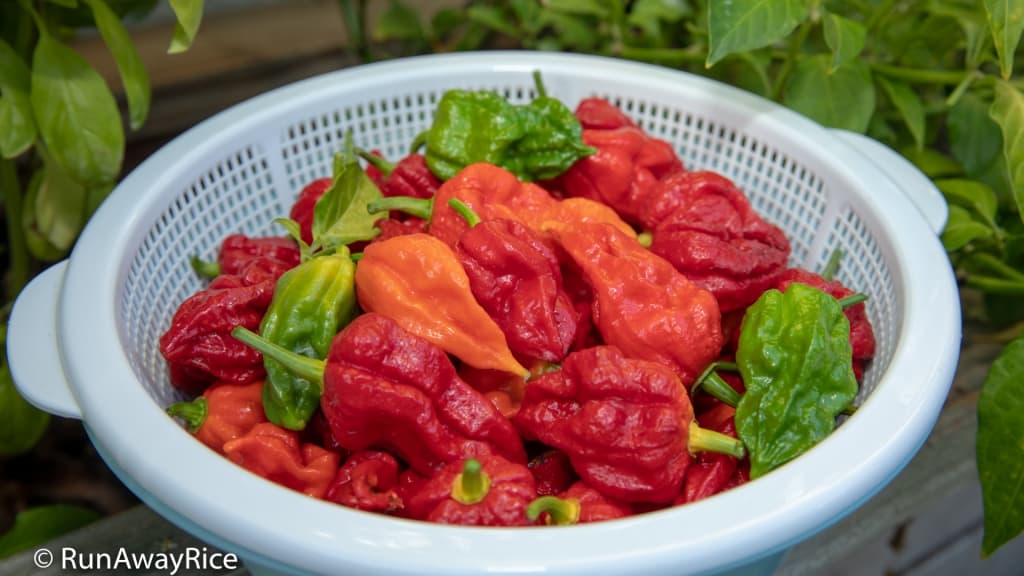
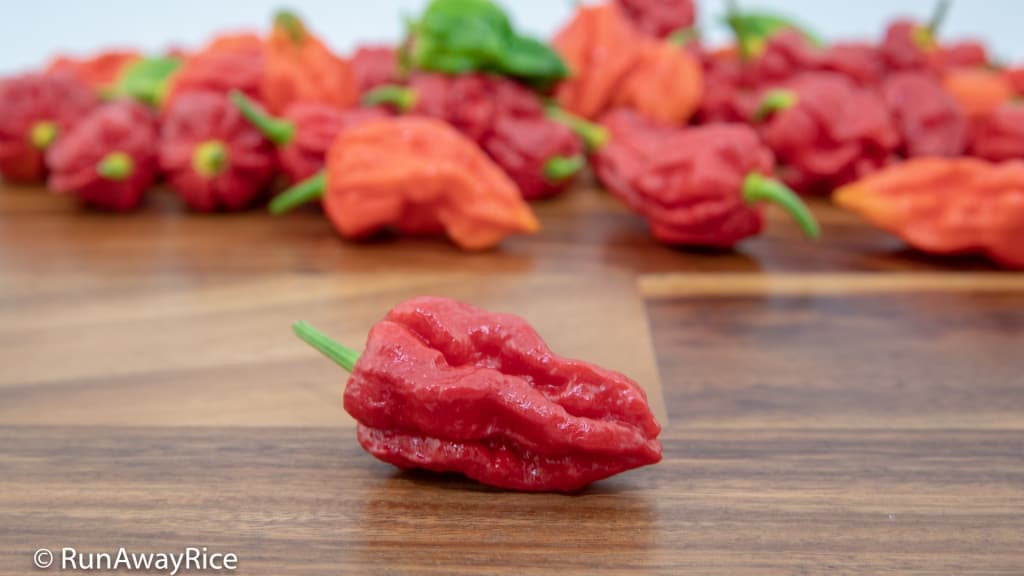
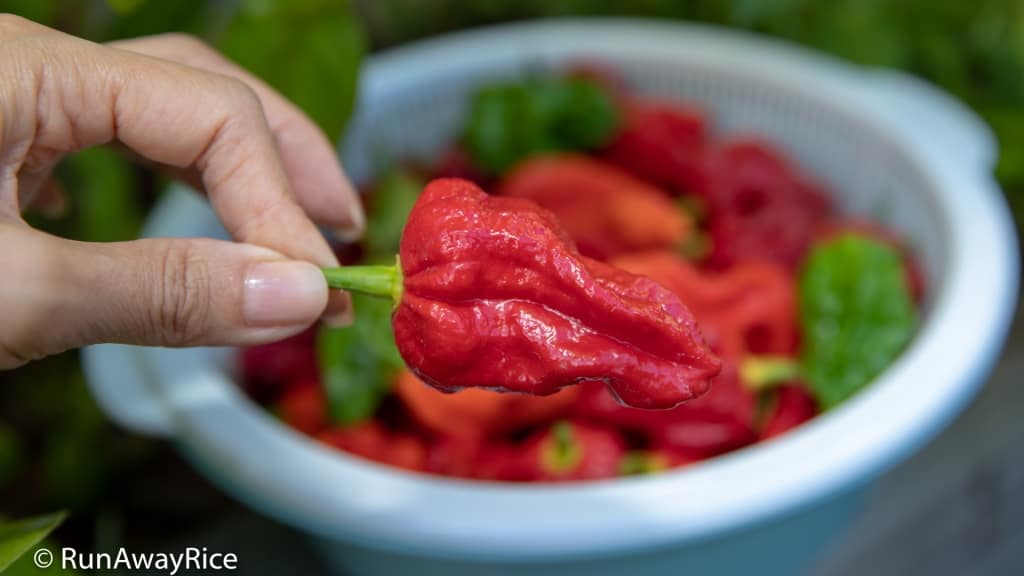
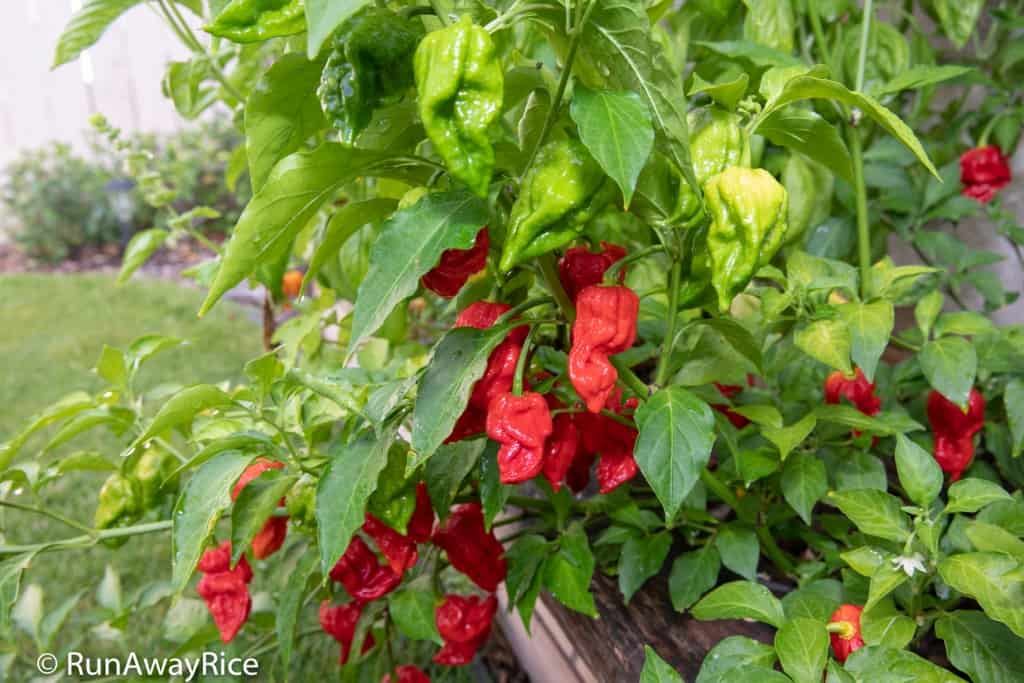
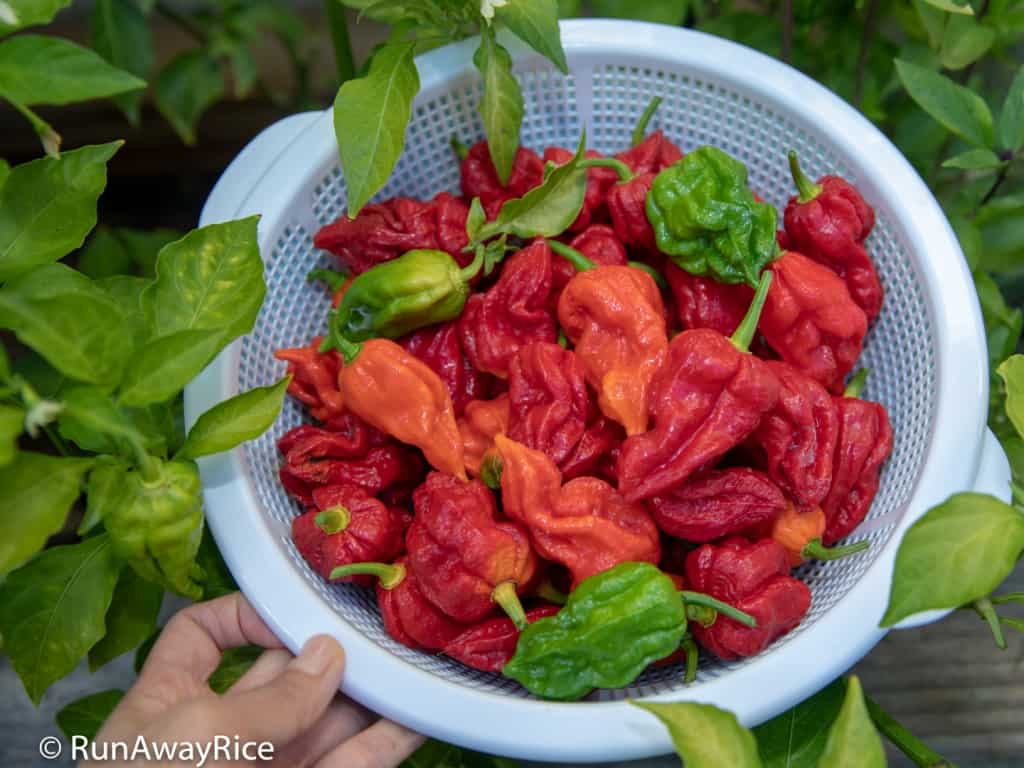
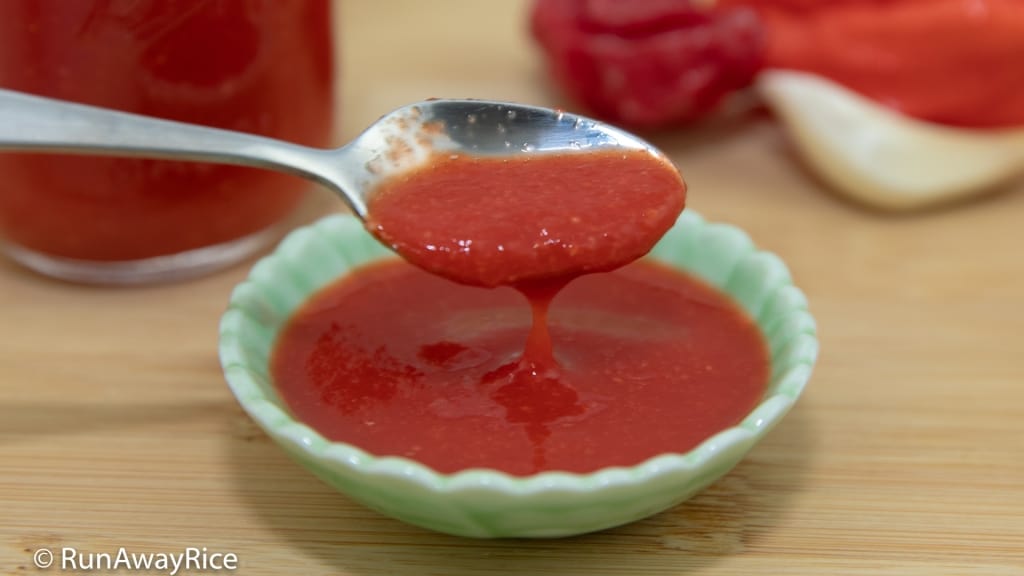
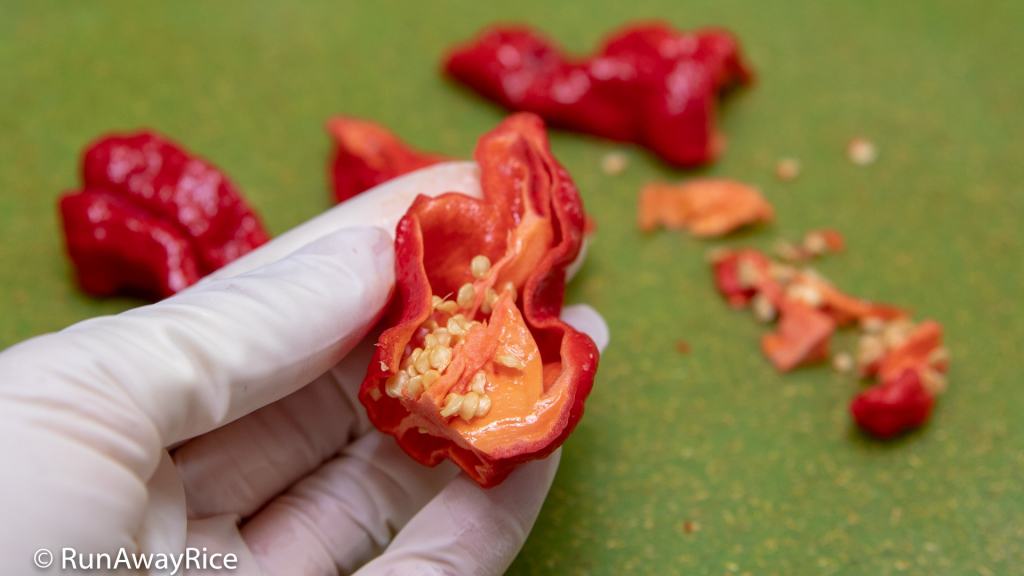
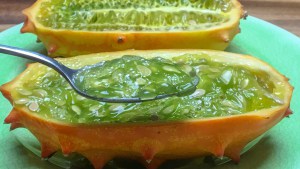
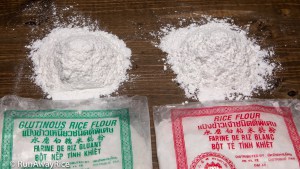

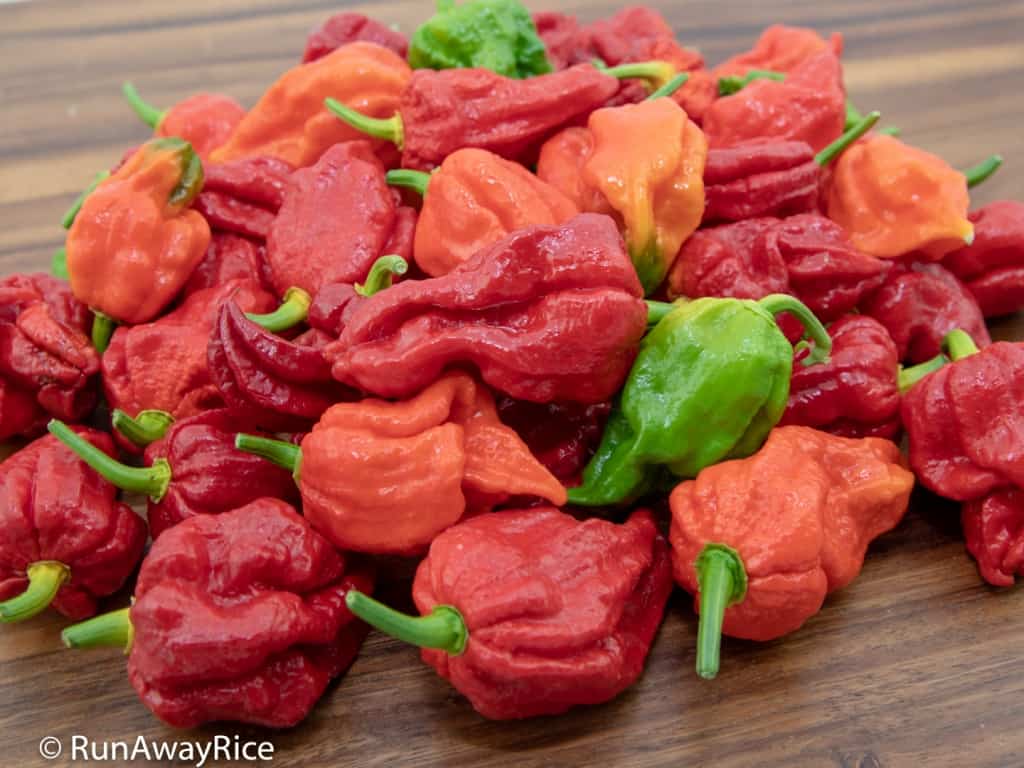
Hi Trang,
Cô bạn khoẻ không? Thank you for such nice photos of your Bhut Jolokia peppers. You provided an excellent write up of your experience with these pepper. I live in Chiang Mai, Thailand. I bought a seed package of these pepper to grow because, like you, I love spicy things. I make my own hot sauce using Thai peppers and thought I might like to add a few Bhut Jolokia to this sauce, which is already hot. I found your web page because I was looking for images of what the leaves of the Bhut Joloki look like. My ThaI wife thinks my peppers are weeds so I needed to find a reference photo to convince me that my plants are, in fact, Bhut Jolokia. These plants seem to grow quite fast, so I am just now waiting for the first peppers to appear. I’m kind of afraid to taste them because they’ll likely be painful to taste or eat, even a small amount. Again thanks for sharing your great colorful photos and interesting comments about the ghost peppers you grew. Regards, Don.